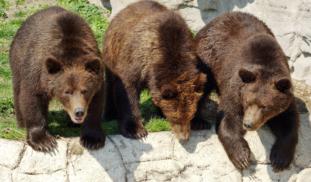Please wait...
About This Project
Why does innovation evolve? We humans are extremely innovative, but there are multiple pressures in our evolutionary history that could have selected for it. We're going to examine both sociality and foraging complexity as evolutionary pressures that select for innovation across species. By giving bears (Ursidae) and cats (Felidae) a puzzle box with multiple solutions, we'll shed light on this evolutionary conundrum.

Browse Other Projects on Experiment
Related Projects
Do primate mothers grieve?
Do primates understand death? Can they grieve? When a primate baby dies, often the mother will carry its...
Does increasing enrichment complexity for bears encourage them to work harder for their food?
Food abundance, delivery schedules, and other external factors affect animal behavior in zoos, especially...
Cat and Human Personality Interaction Project
Millions of cats that enter US animal shelters every year are euthanized. Currently, there is little scientific...





